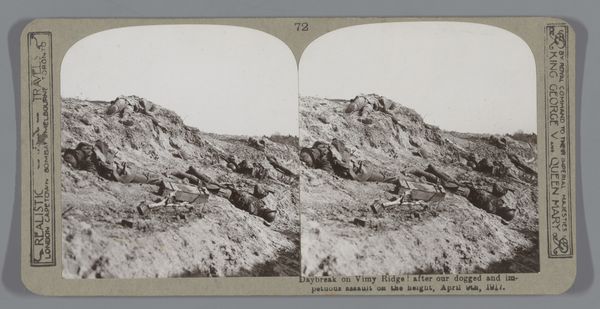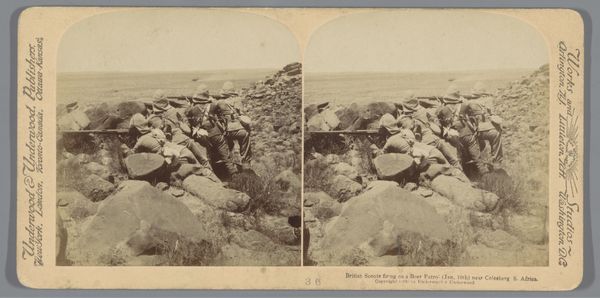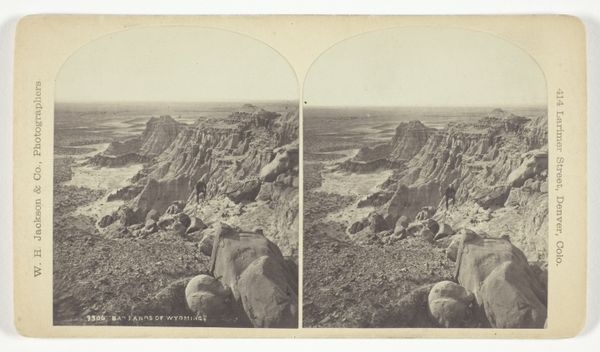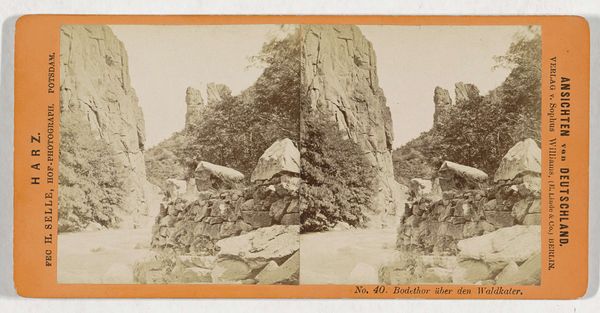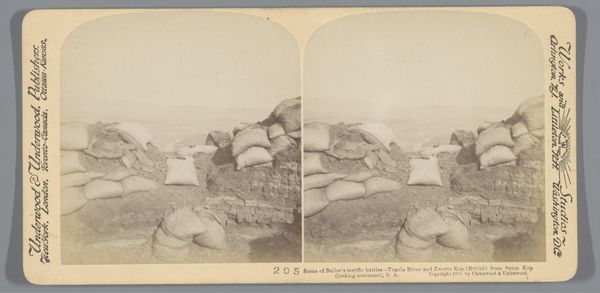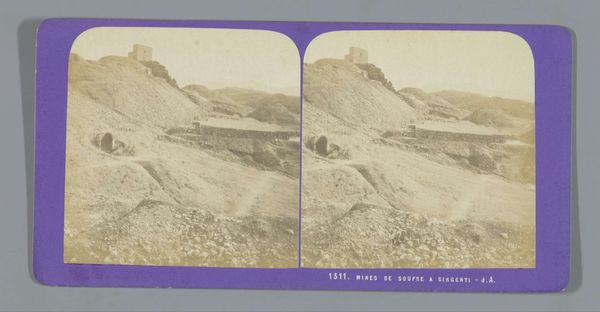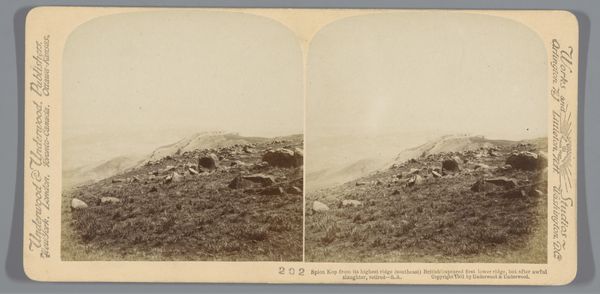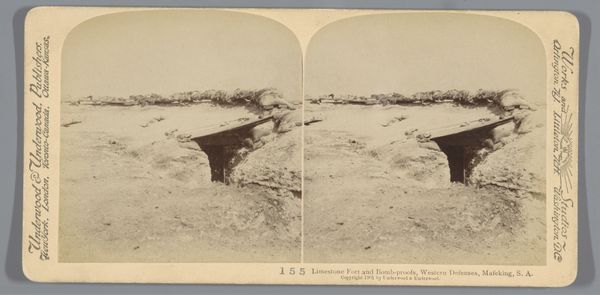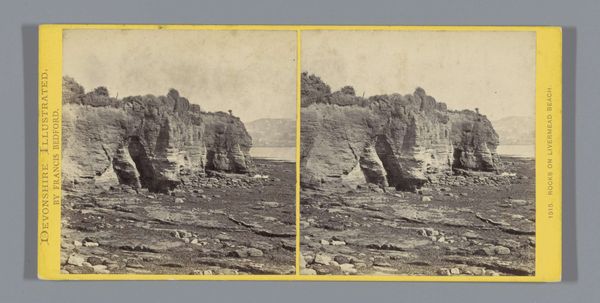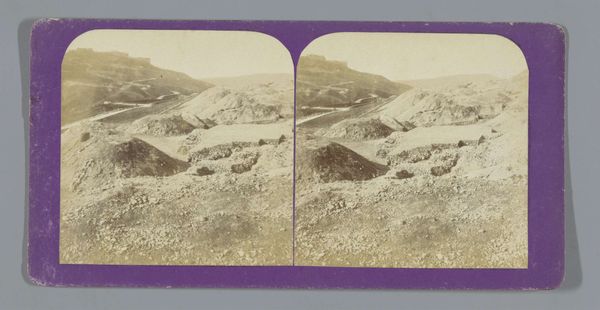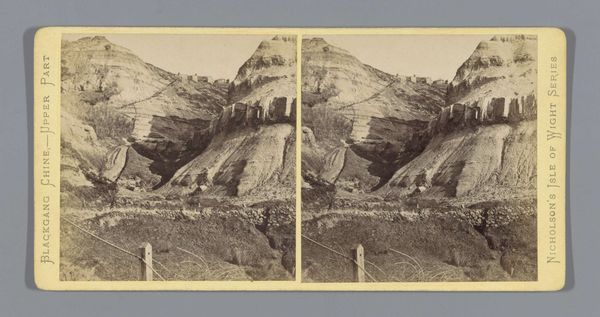
Gezicht op de verdedigingswerken van het fort van Lord Methuen (Paul Sanford Methuen) ten zuiden van Kimberley 1901
0:00
0:00
print, photography, gelatin-silver-print
# print
#
landscape
#
photography
#
gelatin-silver-print
#
realism
Dimensions: height 88 mm, width 178 mm
Copyright: Rijks Museum: Open Domain
Curator: Looking at this image of the defensive fortifications reveals how much labor was needed for building this specific landscape. Editor: It’s striking. The strong diagonal lines of the earthworks draw my eye immediately. The starkness, that limited palette...almost lunar. Curator: The gelatin silver print titled "View of the defenses of the Fort of Lord Methuen south of Kimberley" from 1901 captures a moment during the Second Boer War. I find myself thinking about who had access to documenting events like these, and what their roles may have been. Editor: Note the texture – the grainy earth against what appears to be sandbags in the foreground, a clear intention to capture a visual language for modern fortifications. The framing divides the composition nicely, placing fortifications forward as an abstract representation of power dynamics. Curator: Consider that the sandbags were made by someone, or by many someones, out of locally available materials. Were these created under coercion, by enlisted soldiers, or were local indigenous peoples employed? The labor that is apparent is masked as if these forms spring up as if by will. Editor: Visually, these repetitions do convey an idea of permanence but they are contradicted by the somewhat flimsy constructions. They aren't made to last. These forms will crumble back into dust. What does this imply about notions of colonial strength at the turn of the century? Curator: Perhaps that its strength depends on readily accessible resources and the labor extracted to employ it. The flatness, or near lack of deep space also alludes to the British view of a limitless empire, and it also echoes the limited range of resources one will likely find at a siege such as the one at Kimberley. Editor: It’s interesting to observe the composition as an early application of propaganda through visual imagery. The photograph romanticizes the military by aestheticizing military works into forms, negating the conflict's grim realities, through formal visual qualities and use of materials on hand. Curator: Exactly. By examining photography through the lens of material conditions, it demystifies it as a form, not a sacred image, but rather as a construct of cultural priorities made up of chemical processes, labor, and available resources. Editor: This discussion enriches our perception beyond merely viewing the artwork; we gain a new understanding.
Comments
No comments
Be the first to comment and join the conversation on the ultimate creative platform.
